Diagnosis of major diseases of litchi
Diseases of litchi
| 1. Leaf Blight | 2. Twig Blight |
|---|---|
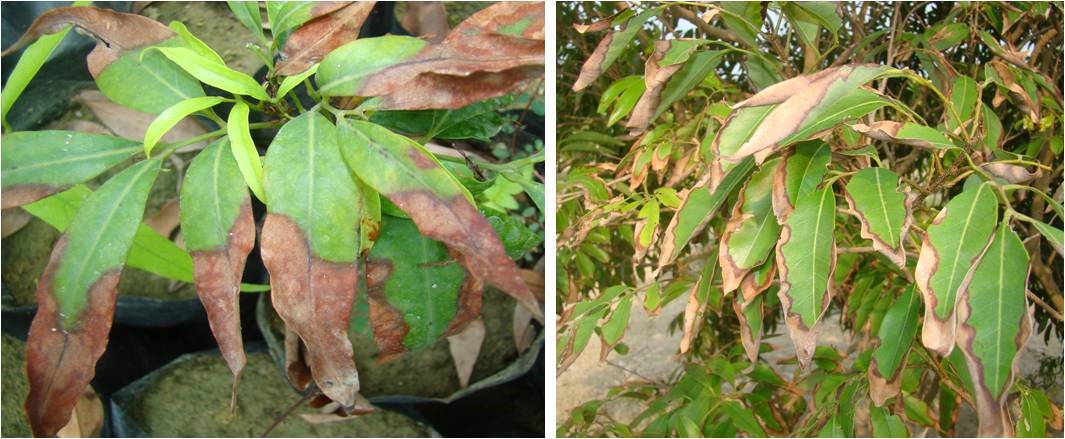
Symptoms: A prominent disease in litchi nursery, also cause blight of panicles and developing fruits. The symptoms starts from tip of the leaf as light brown to dark brown necrosis that advances towards both the margins of the leaf leading to complete necrosis of the affected leaves that dries up subsequently. Management: Fungicidal spray of Copper oxychloride (0.25%) or Thiophanate methyl (0.15%) Chlorothalonil (0.15%) or Difenconazole (0.05%) can be done if disease severity increases. |

Symptoms: Death of leaves on new shoots, and a foliar blight and tip dieback. The afflicted leaves give the impression as if they were scorched by the sun. Management: Fungicidal spray of Copper oxychloride (0.25%) or Carbendazim (0.1%) can be done if disease severity increases. |
| 3. Panicle / Inflorescence and fruit blight | 4. Anthracnose |
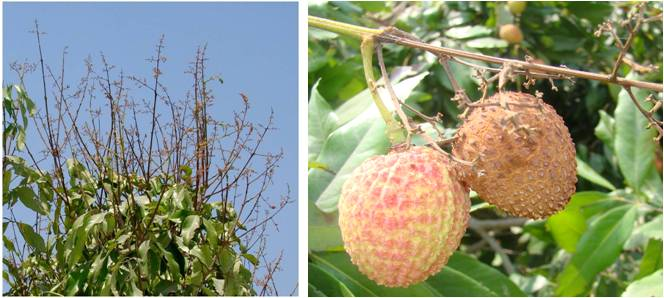
Symptoms: The leaf blight pathogen also cause panicle blight and fruit blight at later stage. Blighting of panicles and fruits occurs. Panicles shrivel and dry up as a result of necrosis, while necrosis of the pedicel lead to complete drying of the rind of developing fruits. Management: Augmenting natural plant defense by soil application of microbes such as Trichoderma, Mycorrhiza etc. Spray of difenconazole (0.05%) or thiophanate methyl (0.1%) or azoxystrobin (0.023%) or carbendazim (0.1%). First spray just after panicle initiation and second spray at colour-break stage of fruits (20 days before harvest) |
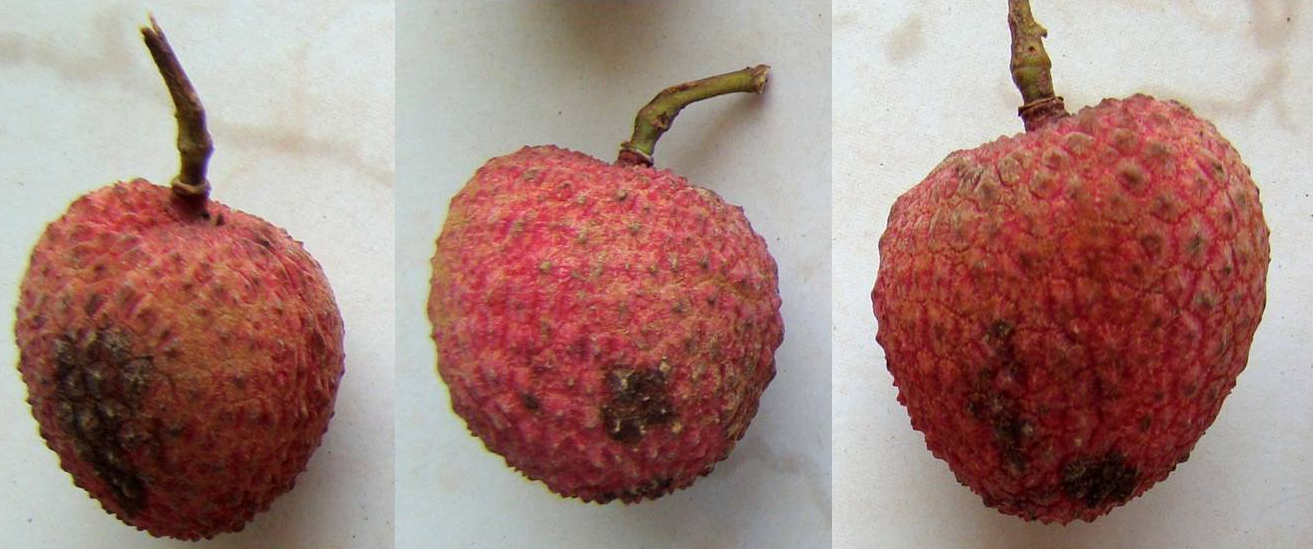
Symptoms: On fruits brown pinhead lesions appear that later turn to circular dark-brown to black sunken lesions on mature fruits. Management: Spray either with copper oxychloride (0.25%) or carbendazim (0.1%) or difenconazole (0.05%) or azoxystrobin (0.023%). Pre-harvest spray of fungicides help in extending post-harvest life |
| 5. Wilt | 6. Fruit rots |
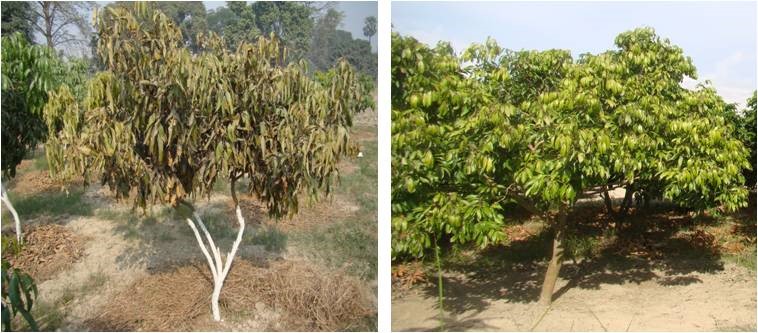
Symptoms: Young trees of litchi, often below five-year age, wilt in less than a week time. The first symptoms appear as yellowing of foliage, drooping leaves followed by gradual wilting and drying, leading to complete death of the plant within 4-5 days. Management: Application of castor cake or neem cake as manures along with biocontrol agents like Trichoderma harzianum, T. viride, Pseudomonas fluorescens etc. has been proved effective in managing the disease. In absence of biocontrol agent, drenching rhizosphere soil with hexaconazole or carbendazim (0.1%) may be done. Growers are also advised not to plant litchi trees on waterlogged soils or in low-lying field often receiving flood water. |
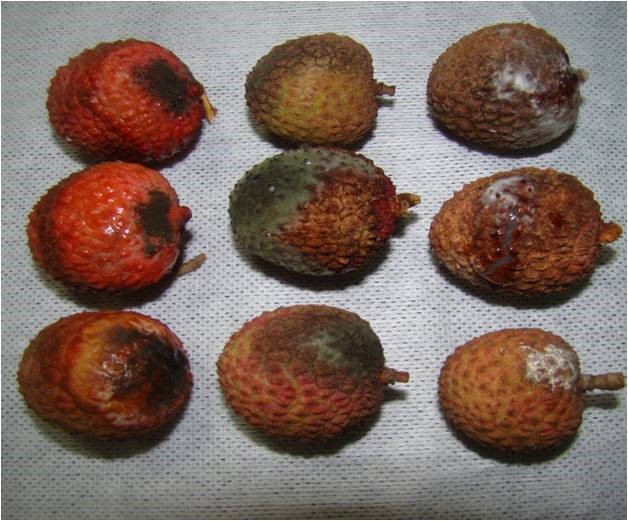
Symptoms: Initially perceptible on injured portion of the fruits. The decayed areas get depressed and rot gradually penetrates deep into the pulp. Fruits emit an odour of fermentation. Management: One spray of carbendazim (0.1%) 15-20 days before harvest. Prevent from physical injuries during harvesting. Prompt precooling and maintenance of the optimum temperature and relative humidity during storage and transport of fruits. Sulphur fumigation if allowed by importing countries. For this, fruits are placed in a closed chamber where 50-100 g sulphur per m3 of air is burnt for 20-30 minutes. For transportation use Corrugated Fibre Boxes of 2 kg capacity properly unitized for stacking. |


